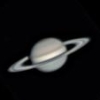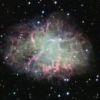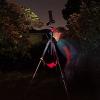The only time there is a concern is when the low power arm is in.
This will require considerable in-focus travel. In many cases, the in-travel requirement will be enough that the front of the OCS will extend into the light path of incoming light, though that hurts nothing in iteself. Only explaining how it behaves. Once you go to medium power, the focuser will have to be racked out considerably.
For example, in my scope, with low power mode, my focuser is racked in so far that I only have about 2-3mm of travel left. In this configuration, the front of the OCS tube extends maybe 1" in front of the primary mirror and is about 6" in front of the focal plane (and again, you don't need to worry about ray tracing with all different configurations. The only thing that matters is how far in front of the focal plane the 45mm restriction is).
When I go into medium power, I have to rack the focuser outabout 1.75". Now, the nose of the OCS is just about even to the inside wall of the tube. Completely out of the light Path and less than 4" in front of the focal plane of the mirror, so now, the light cone is almost fully unvignetted.
When I go to high power, the amount of focus travel is far less than what is required to go from reducer mode to mid power mode. Now, I only have to rack out an additional half inch or so.
My focuser travel is only about 2.3 inches, and I only just barely reach focus at both ends without extending the OCS tube (which puts it closer to the light cone) or slipping the binoviewer out of the focuser to reach focus in high power mode.
Anyway, There should not be any concern in medium and high power mode. The OCS is much further away from the light cone in these modes than in reducer mode. It is only reducer mode that poses a potential problem.
It is the same in SCTs. It is only the extreme in-focus requirement when using the reducer that becomes an issue even on SCTs. In medium and high power, the mirror moves far enough back to focus that any damage done in low power mode is undone in medium and high power modes.
You should be OK though down to about f/3.4 or maybe a bit faster than that.
How a Newtonian behaves, and how a Newtonian behaves with a binoviewer and OCS may be two very different things. In general, I think you are right, that field illumination improves with aperture, but that is without a 45mm restriction in the light path.
The Geometry of it suggests that there will be considerable off axis illumination falloff in low power mode, but that is not as serious as it sounds. It can look objectionable under bright skies, but under dark sky, it can go unnoticed.
















